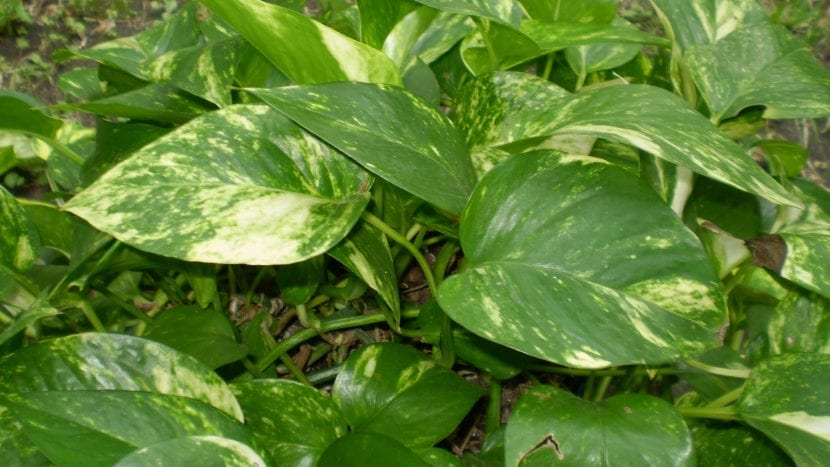
Philodendron scandens subsp. oxycardium
El philodendron it is a very extensive genus of plants. In fact, it is so large that more than 700 species are known, and many of them can be found for sale in nurseries.
Its cultivation and maintenance is not very difficult, so it is highly recommended to get a copy and decorate the house or garden with it.
Origin and characteristics of the philodendron
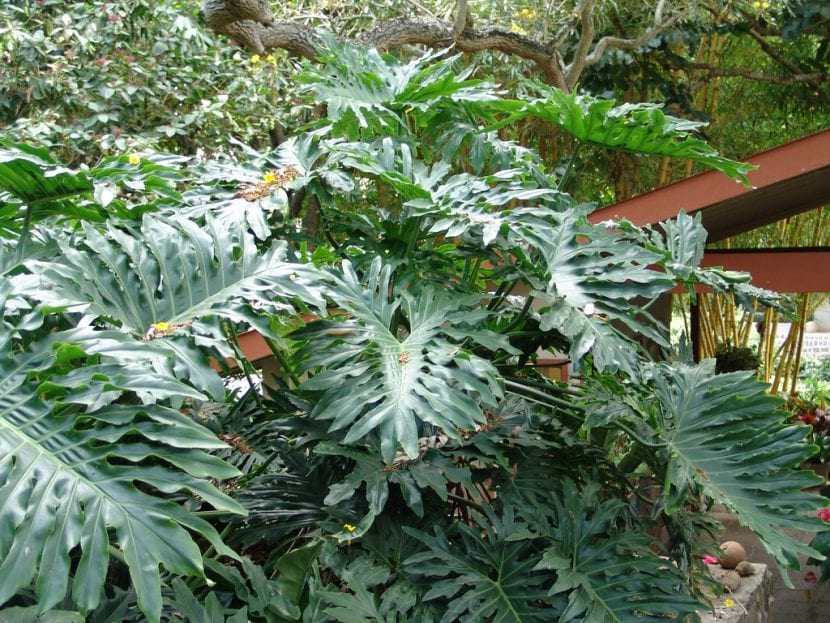
Philodendron bipinnatifidum
Our protagonist is a genus of plants native to the tropics of America, specifically from Brazil, Colombia, Venezuela, Martinique and Guyana. Many species grow in forests, but also in swamps, rivers, and even on rocky terrain. They are characterized by being shrubs or small trees with aerial roots that help them to climb on high trunks.
The leaves are usually large, whole, lobed or deeply cleft, green or brown depending on the species and variety. The flower stalk arises from an axillary leaf, or as a terminal flower stalk, and gives off an intense aroma. The flowers appear distributed in a cylindrical inflorescence in a spathe (modified leaf) of white, red or yellow color. The fruit is a fleshy inedible berry. All parts of the plant are poisonous.
How do you take care of yourself?
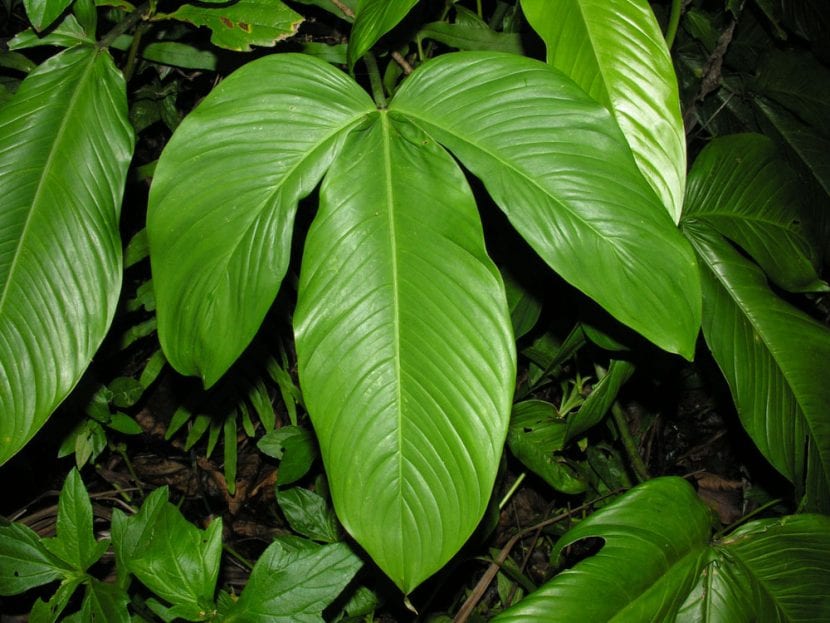
Philodendron tripartite
If you want to get a copy, we recommend providing the following care:
Climate
Tropical. In order to survive outdoors, it needs the temperature never to drop below 10 degrees Celsius.
Location
- Interior: it must be placed in a bright room but without direct sunlight, so it cannot be placed near a window as it could produce the magnifying glass effect, thus burning the leaves.
- Body exterior:: in semi-shade, protected from direct sunlight.
Earth
- Garden: must have good drainage and be rich in organic matter.
- Flower pot: universal growing medium mixed with 30% perlite or washed river sand.
Irrigation
Irrigation it has to be frequent, especially in the hot months. Thus, in general, during the summer it will be watered every 2-3 days and the rest of the year every 4-5 days.
Humidity
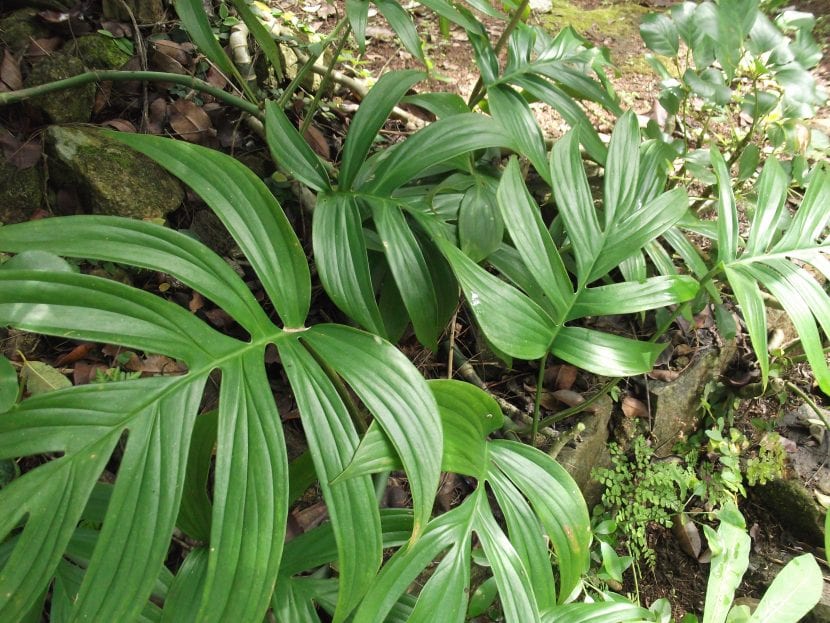
Philodendron elegans
If you have at home it is advisable to put glasses with water around it or place it in a ceramic or glass container with moistened decorative stones to increase the humidity. In summer the leaves can be sprayed with lime-free or rainwater.
Subscriber
From early spring to late summer It must be paid every 15 days with a liquid universal fertilizer following the indications specified on the product packaging.
Planting or transplanting time
In spring. If you have it in a pot you have to transplant to the philodendron every two years.
Multiplication
In summer it can be multiplied by stem cuttings planted in a pot with vermiculite. After a month or month and a half we will have a new copy.
Pests
- Red spider: they are parasites of about 0,5cm of red color that weave cobwebs between the leaves, on which they feed. They are fought with acaricides.
- Mealybugs: There are two types that affect it the most: the cottony type and the ones that look like limpets. In any case, they can be removed with a swab from the ears dipped in pharmacy alcohol.
- Aphids: they are brown, yellow or green parasites that measure about 0,5cm. They also feed on the leaves, especially the most tender ones. To eliminate them I advise to use neem oil, potassium soap o traps yellow stickers.
- Trips: They are like tiny black earwigs that leave little black dots (residues) on the leaves and greatly weaken them. They can also be removed with potassium soap.
Management
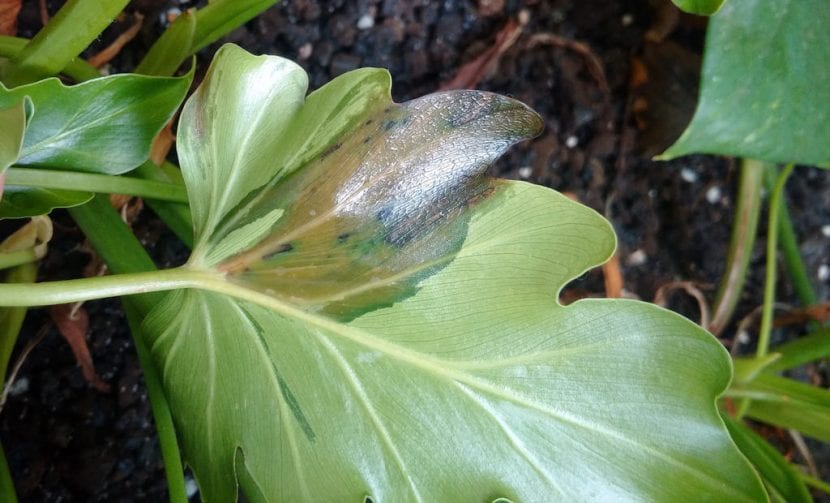
- erwinia: they are bacteria that produce concentric spots on the leaves.
- Pseudomonas: they are bacteria that produce small circular spots on the leaves.
- xanthomonas: they are proteobacteria that redden the edges of the leaves.
Treatment is to remove the affected leaves.
Problems
Besides pests and diseases, you can also have other problems, which are:
- Yellowing of the leaves and subsequent fall: excess watering.
- Fall of leaves: it can be due to excessive heat or cold.
- Leaf discoloration: It may be because you are in a room that is too dark.
- Poor sprouting: it may be due to lack of compost, or space if it has never been transplanted.
- Leaves losing firmness: lack of irrigation.
- Burns: it may be due to being in a very dry environment, or being near a window where the sun's rays reach.
With what to clean the sheets?
Plants that are indoors need regular cleaning in order to continue growing normally. For it, It is highly recommended to clean them with a cloth dampened with rainwater or lime-free at least once a week.. In this way, they will be made to look as beautiful as the first day.
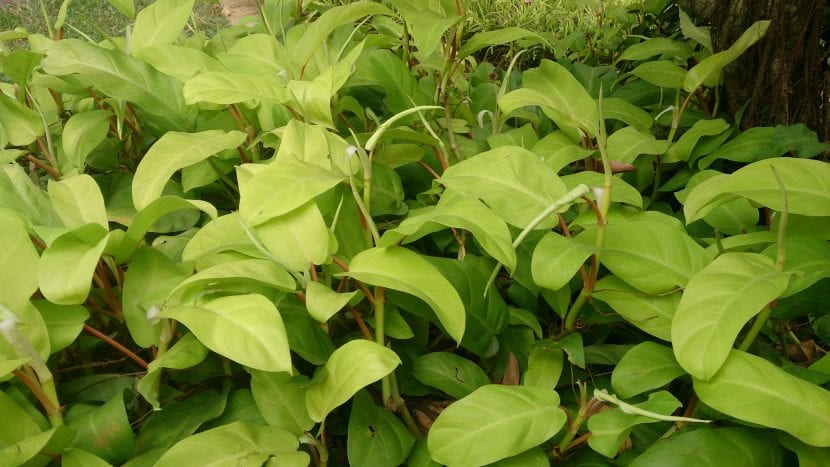
philodendron red
And with this we are done. Do you have a philodendron at home? I hope that what you have learned helps you to make it even more beautiful 🙂.
Hi there! I would like to have a philodendron in my apartment, but I have a dog and they have told me that it may not be safe for them (like potus) could you tell me if it is so and if it is, would you recommend a similar plant (need for light) , level of care and appearance)
Thank you!
Hello Julieta.
Yes, philodendron is a toxic plant for dogs.
Of similar appearance, I cannot think of any, but the Chamaedorea it needs practically the same care and lives well indoors.
A greeting.
Thank you!!!
Thanks to you, Ana.